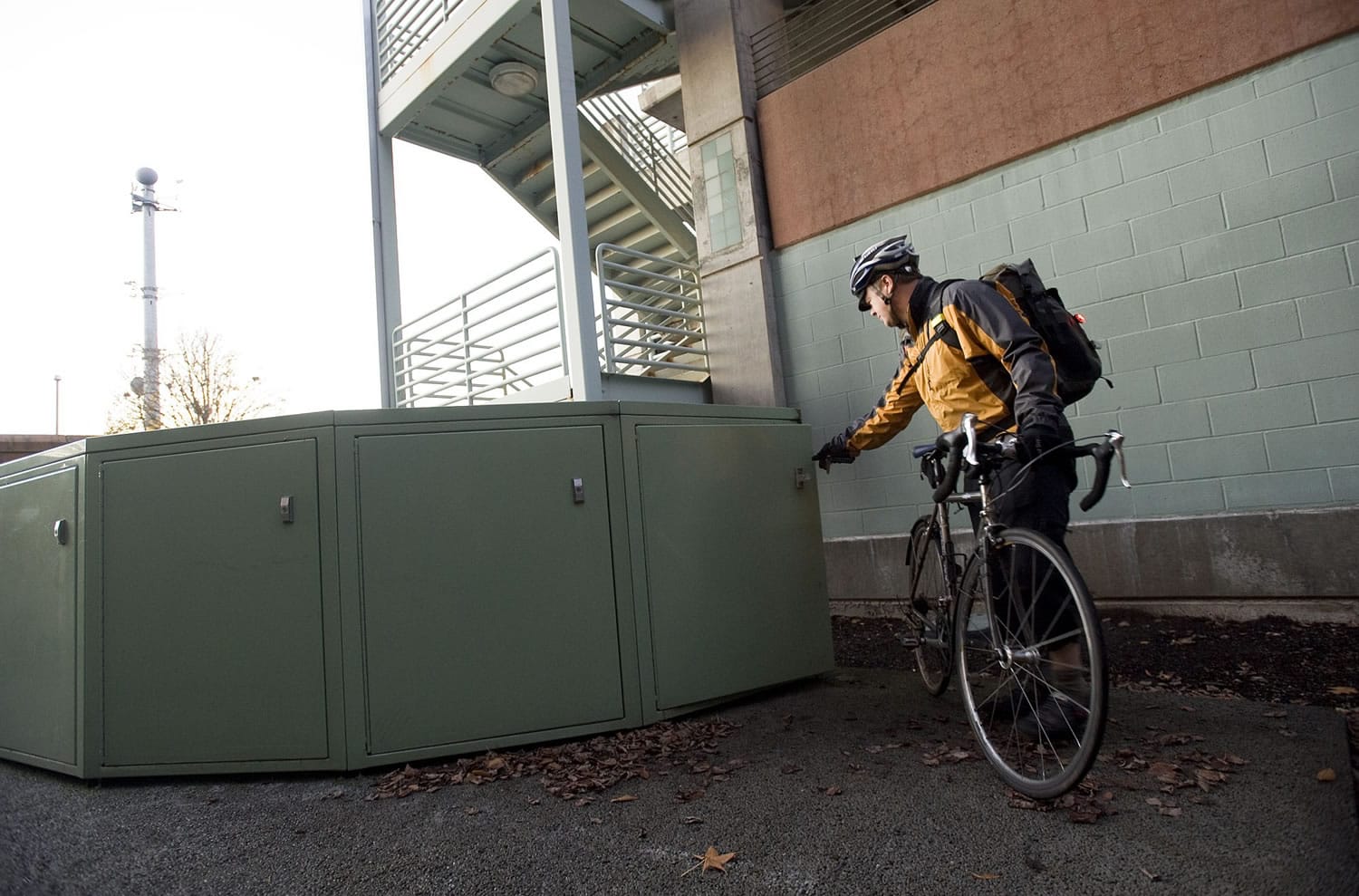Ian Wigger made the commitment before the start of this year: He decided he’d commute to work by bicycle every single day, making the 11-mile trek from his northeast Portland home to the Clark County Public Service Center in downtown Vancouver.
So far, so good. Wigger said he’s racked up more than 4,000 miles on his bike since Jan. 1 — through rain, shine, heat, cold and occasional snow — and hasn’t missed a day.
The reason? “Just the challenge of it,” said Wigger, a natural resources specialist with the county’s Environmental Services department.
City leaders are hoping to add more to the ranks of non-car commuters downtown, kicking off a pilot project aimed at enticing people to take bicycles, public transit or their own feet to work. Helping lead the effort is consultant Alta Planning & Design, working under a $70,000 contract funded by two federal grants, said city senior planner Jennifer Campos.
A key part of the effort is engaging with businesses that bring employees into Vancouver’s core each day, Campos said.
“That’s the first step,” Campos said. “And that’s the main goal of the program.”
Planners will focus on larger downtown employers with more than 20 workers, though that doesn’t discount the many businesses with only a handful of employees, Campos said. Efforts may include public events or a “transportation fair” to increase awareness of alternative options out there, she said.
Alta Planning & Design will use a work plan developed last year as its blueprint, continuing the city’s earlier “commute trip reduction” efforts. The work plan — to be largely launched during the next year — includes incentive programs encouraging employees to walk or bike to work, such as cash, equipment or discounts at downtown businesses. The plan also floats specialized marketing of transit passes, and possible outreach materials with route maps and other information.
About 86 percent of downtown employees get to work by car today, said city planning manager Matt Ransom. The program aims to eventually drop that number to 65 percent.
Bob Wallis offers two simple reasons for riding his bicycle to work: Saving money and getting exercise. The Vancouver resident and founder of Wallis Engineering pedals daily to his downtown office near Esther Short Park.
But Wallis said it will likely take more than a promotion to change people’s commuting behavior. The city’s changing downtown now creates disjointed bike and pedestrian corridors, he said, only reinforcing a car-first mentality. Wallis has heard recent development described as “project-wise, place-foolish” — a characterization he agrees with.
Many people are kept in their cars by “weather and intimidation,” Wigger said. If someone isn’t in the habit of biking or walking consistently, it’s easier to find a reason not to, he said.
Ransom said the city recognizes that challenge.
“We’re all creatures of habit,” Ransom said, later adding: “It’s breaking down barriers.”
The ultimate goal is improving the performance of an already crowded transportation system, Campos said. But that doesn’t mean converting everyone into a die-hard cyclist, walker, carpooler or transit rider, she said — planners hope people might simply try out something new at first.
“If it’s not five days a week,” Campos said, “that’s fine.”
Eric Florip: 360-735-4541; http://twitter.com/col_enviro; eric.florip@columbian.com.




